What Is .edb File
EDB, the abbreviation for Extensible Storage Engine Database, is the database file of Microsoft Exchange Server supported by Windows platforms only. Extensible Storage Engine (ESE) is a data storage technology developed by Microsoft. It allows applications like Exchange Server to store and retrieve data via indexed and sequential access. Thus the Exchange .edb file contains all the accounts and their mailboxes under the current Exchange Server. It's no doubt that all the items under the mailbox (Inbox, Outbox, Sent Items, Deleted Items, Calendar, Contacts, Drafts, Journal, Notes, Tasks, and Unknown)are also included in the .edb file.
How to Open EDB File with EDB File Viewer
Given the information above, you should know that the commonest way to open and access the data in the .edb file is to use the Microsoft Exchange Server. Luckily, with the help of an EDB file viewer, you can open and view the items in an Exchange database without Exchange Server.
EaseUS Exchange Recovery, although not exclusively designed for EDB file viewing, can serve as an EDB file viewer. With the software, you are able to open the EDB file and access its data without the installation of the Microsoft Exchange Server.
If you need to, you can also extract data from the EDB file and open the file in Outlook.
To view the Exchange EDB File:
Step 1. Launch EaseUS Exchange Recovery, click the three dots to select the EDB file, and then click "Analyze".
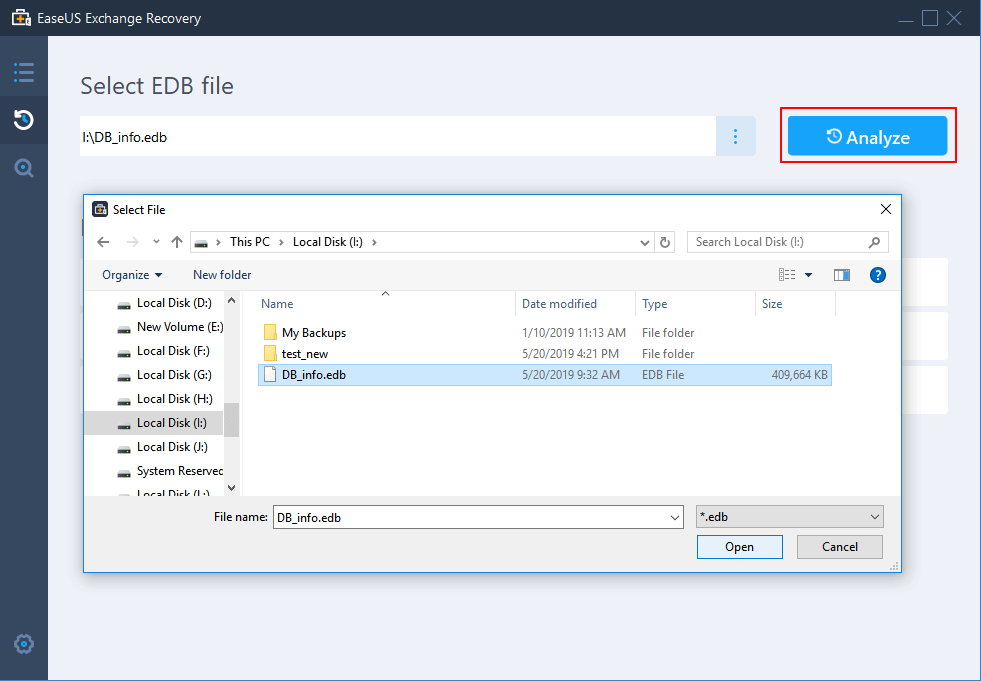
Step 2. Wait for the analyzing process to finish and then you will see all the content, including accounts, namely mailboxes, and the subfolders.
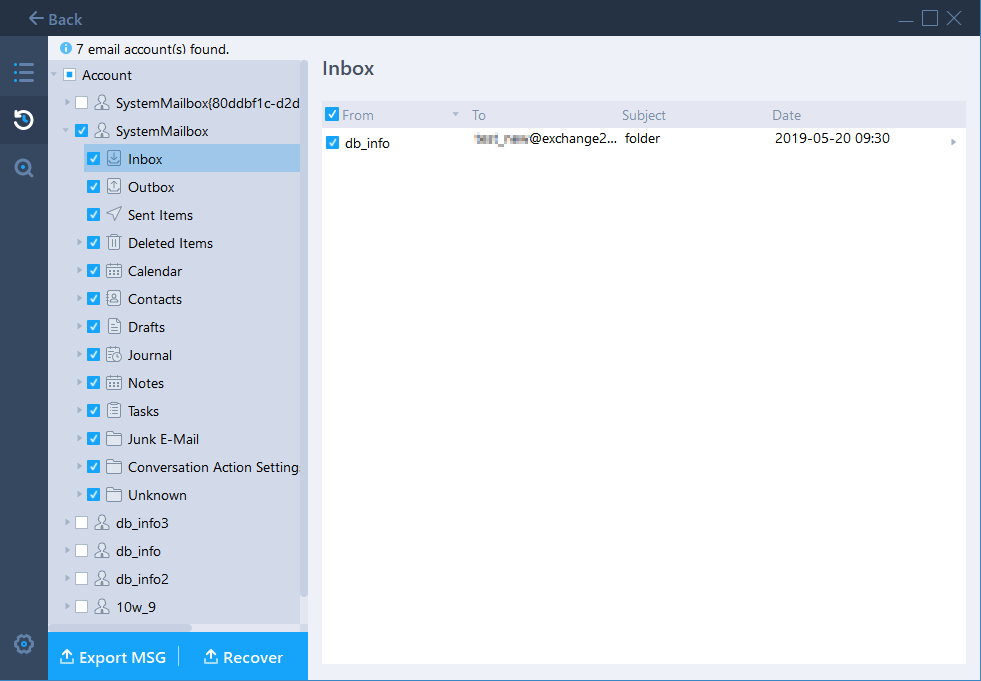
Step 3. To view a specific item, e.g. an email in the Inbox, expand the account and click "Inbox". Then you will see all the items in the Inbox, double-click the item to view its detail.
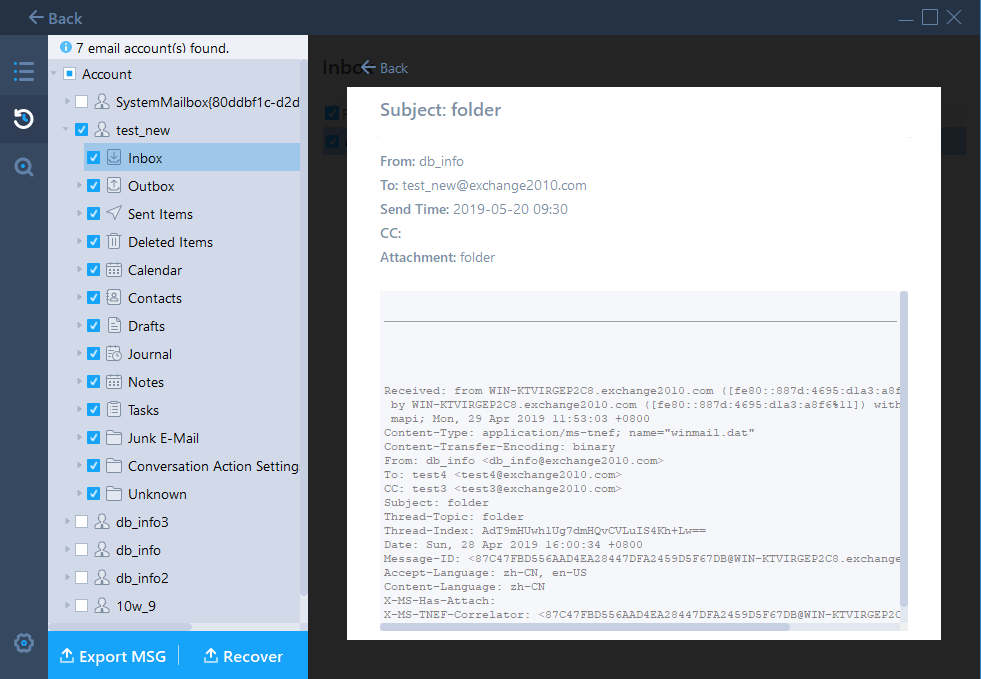
To Extract Data from EDB File:
If you attempt to extract items from the Exchange database file, you can export the data from the database.
Step 1. After the analyzing process, select the items and click "Export MSG" and select a folder to save the data.
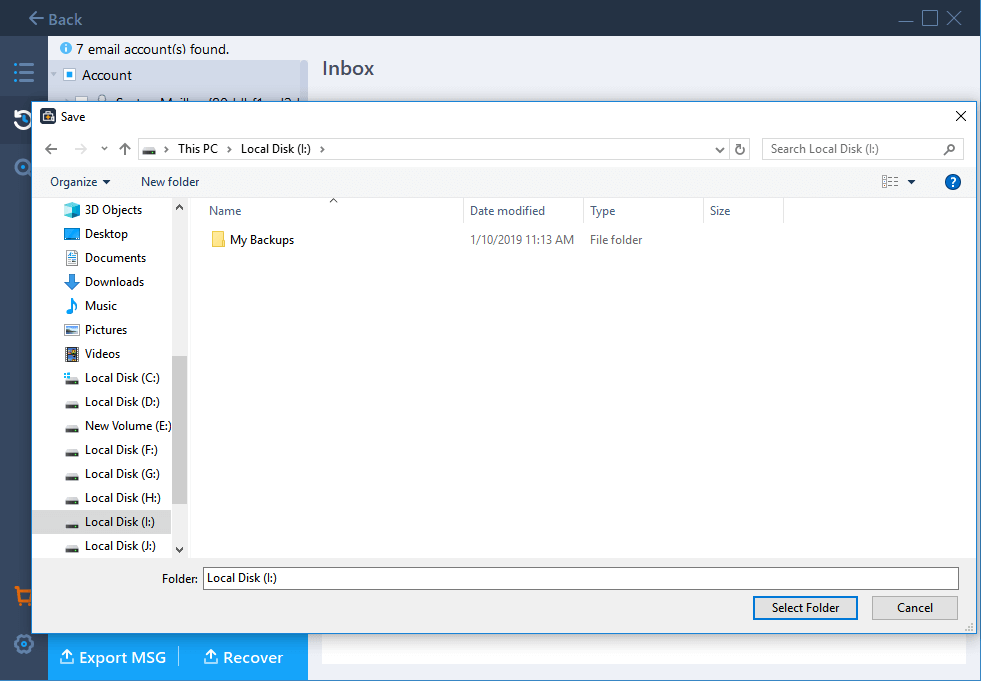
Step 2. When it has completed, click "OK". To view the content in the file, you can open the MSG file using Outlook.
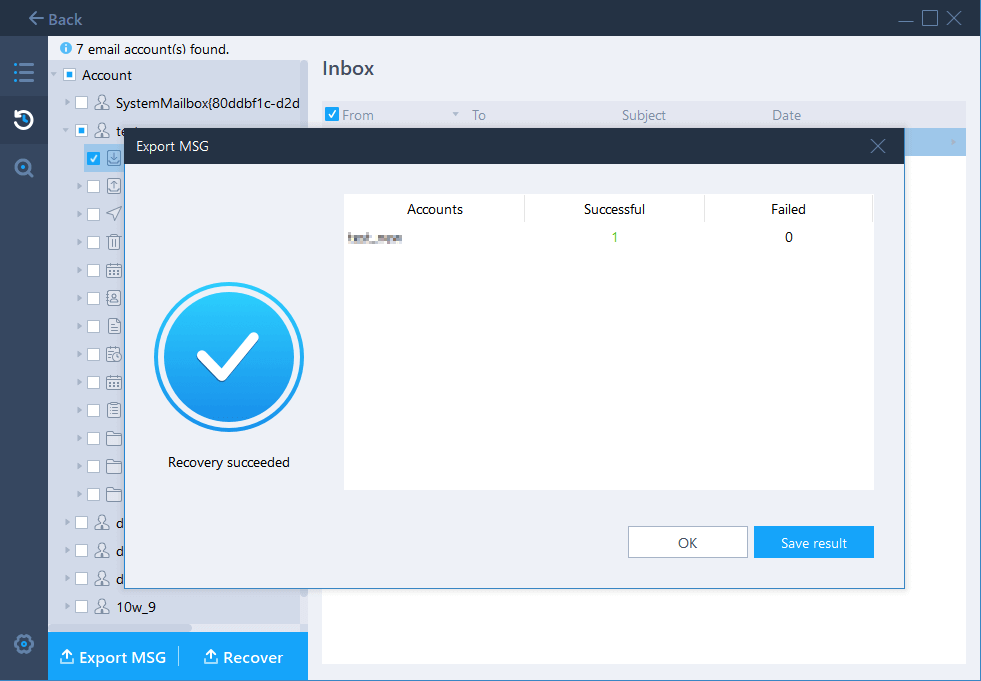
EaseUS Exchange Recovery, as you may know now, can work as an EDB file viewer but is more than an Exchange EDB viewer. It also allows you to recover deleted mailboxes, recover Exchange database to another server, and more.
FAQ: Other Hot Issues Related to the EDB File
Here are some frequently asked questions from users about the EDB file in Windows:
"What is the use of Windows EDB file?"
If you have read the paragraphs above carefully, you should know that the EDB is the database file of Exchange Server. It contains all the data you have in the Exchange Server, including the accounts and the inbox, outbox, and more that belong to the account.
"Can I delete Windows EDB file?"
The EDB file stores all your accounts and data (inbox, outbox, sent items, deleted items, calendar, contacts...). Thus, unless you are sure you don't need the data anymore, don't delete the EDB file from the computer. If you have deleted the EDB file accidentally, use the hard drive recovery software - EaseUS Data Recovery Wizard to retrieve it as soon as possible.
"Where is the EDB file stored?"
The Windows EDB file is under %ProgramData%\Microsoft\Search\Data\Applications\Windows.
"How do I convert EDB to PST"
EDB generally takes a large portion of the disk storage. To reduce the size of the EDB file, you can convert EDB to several separated PST files, which can be done with the help of third-party software.
The Bottom Line
With EaseUS Exchange Recovery, you can view the items in an EDB file, open EDB file without Exchange Server, extract data from EDB file, and open the items in an EDB file using Outlook. It's more than an EDB file viewer. As the name indicates, the software also enables you to recover the deleted items from the Exchange database, which is quite helpful when you accidentally deleted items from an account.
Was This Page Helpful?
Related Articles
-
Fixed: Exchange Mailbox Database Won't Mount [NEW]
![author icon]() Tracy King/2025-07-21
Tracy King/2025-07-21 -
How to Resolve Exchange Dirty Shutdown Error 2016/2013/2010
![author icon]() Cedric/2025-07-21
Cedric/2025-07-21 -
How to Fix Exchange Error 1018 (Page Level Corruption of Exchange Database)
![author icon]() Cedric/2025-07-21
Cedric/2025-07-21 -
Recover Deleted Items in Exchange Server 2016/2013/2010
![author icon]() Tracy King/2025-07-21
Tracy King/2025-07-21
EaseUS Exchange Recovery
- Recover & Repair corrupted EDB files and contents
- Recover from unexpected Exchange Server crash
- Recover Dismounted/Offline EDB Mailbox